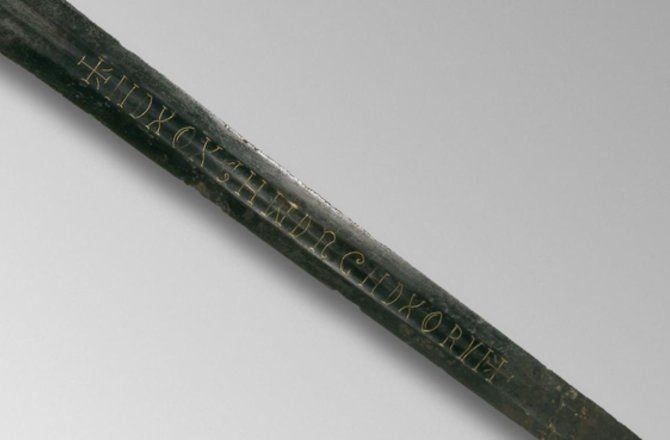Post by UKarchaeology on Aug 13, 2015 14:23:47 GMT

(2015) A medieval sword inscribed with a mysterious message is stumping researchers and causing a stir among armchair historians.
The 13th-century weapon was found in the River Witham in Lincolnshire, in the United Kingdom, in 1825. It now belongs to the British Museum, but is currently on loan to the British Library, where it's being displayed as part of an exhibit on the 1215 Magna Carta.
The sword looks fairly ordinary at first glance. Weighing in at 2 lbs., 10 ounces (1.2 kilograms) and measuring 38 inches (964 millimeters) long, the weapon is steel, with a double edge and a hilt shaped like a cross. But on one side of the sword is a mysterious inscription, made by gold wire that has been inlaid into the steel, which reads, "+NDXOXCHWDRGHDXORVI+."
What does this strange group of letters mean? No one knows for sure, according to the British Library, which recently posted information about the weapon on its website, along with a request for readers to help crack the seemingly incomprehensible code.
Is the message some kind of magical incantation, meant to empower the weapon's owner with mystical abilities during battle? Perhaps the inscription is a religious blessing, or maybe it's just the complicated signature of whoever forged the weapon. Those who read the British Library's blog post put these and many other theories forward regarding the sword's enigmatic message.
Dozens of commenters chimed in to help solve the mystery. And luckily, one of those commenters had a lot of insight into the history of inscribed swords in Europe. Marc van Hasselt, a graduate student of medieval studies at Utrecht University in the Netherlands, has studied similarly inscribed swords and said that these weapons were "all the rage" in 13th-century Europe. The British Library recently updated its blog post with more information from van Hasselt.
Many inscribed swords have been found in countries including Poland, France, Sweden, the Netherlands and the United Kingdom, making the River Witham sword "part of a large international family," according to van Hasselt.
In 2006, researchers from Uppsala University in Sweden (as well as several other institutions) started the Fyris Swords Project, a research project dedicated to figuring out the historical context in which these inscribed medieval swords were used.
The River Witham sword was forged in Germany, which was then the blade-making center of Europe, according to the British Museum. And pre-Christian Germanic tribesman inscribed runes onto their swords, axes and armor to "endow the items with magical powers," the Fyris Swords Project researchers wrote in a paper published in the journal Waffen- und Kostümkunde (Weaponry and Costumes) in 2009.
(source/pic: news.discovery.com/history/archaeology/medieval-sword-bears-mysterious-inscription-150812.htm )
